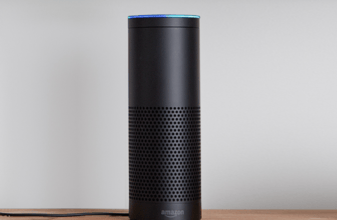
Fashion and the Art of the Cart Abandonment Email

Even the most successful web stores suffer from cart abandonment, which is the term for when customers go through a portion of the purchase process and then leave the website before completing checkout. There can be any one of a hundred reasons why a customer abandons their cart. Sometimes it’s intentional, but sometimes carts are abandoned by accident, because the website timed out or crashed, or the shopper accidentally closed the browser.
According to Bolt, the average cart abandonment rate for clothing is 40%—which is more than the cart abandonment rate for home, tech and fitness combined. HubSpot points out that only 19% of the top 1,000 eCommerce companies engage in any kind of shopping cart abandonment recovery, yet 50% of customers who frequently abandon their carts will complete their purchase when prompted to. So it’s clear that eCommerce websites should be sending cart abandonment emails, otherwise they’re leaving money on the table. Read on for six tips for successful cart abandonment emails for fashion eCommerce websites.
Timing is everything
Contact your customer at the right times. Do this by setting up a series of automated cart recovery emails, or what’s known as a drip campaign. For example, you could set your system to send your first cart reminder email one hour after abandonment, then a second follow-up email a few days later, followed by a third email, perhaps with a promotional discount, a few days after that.
The discount could be a percentage off the product price, free shipping or a bundle deal—it’s up to you. You may want to try waiting to send the first email three to five hours after initial cart abandonment, if one hour after feels too soon. This timing is also something you could A/B test. You’ll never know what kind of timing your customer base responds to best unless you test it. However, it’s important to not become too predictable with your cart abandonment deals, otherwise your customers could learn to wait for coupons to arrive before revisiting their cart and making their purchase. (We’ll be covering A/B testing more, later on in this blog.)
Personalization is key
Make sure your emails are set up so that they specifically reference the product that was abandoned in the customer’s cart. They should include the product image, name and price in the body of the email, and directly reference the product they left behind in the email subject line. They should also address the customer by name—this makes it feel more tailor-made and personal. The more personal your email, the more likely it is to succeed.
You may also choose to have your system set up to trigger an email to one of your sales associates at the same time, so that when your shopper is recovered they can be assisted through the sales process by someone with all of the necessary details. This might only be necessary for larger purchases, B2B companies, or a product that requires customization.
AB test different tones
Witty, straightforward, or somewhere in-between? You need to explore all types of angles in your subject line copy in order to see which tone works best for your brand, but above all your cart abandonment emails should match the tone of your other marketing efforts.
You could try a straightforward subject line like “You left something” or “It looks like you forgot something”, but subject lines that include the product the shopper was looking at—and address the shopper by name—are ideal. For example, “[Name], your new favorite [jeans] are almost gone!”
Humor can also be effective—Adidas used this angle: “Is your Wi-Fi okay? Maybe your browser crashed when looking at [insert product name here].” Australian brand BlackMilk Clothing used this line: “Where’d you go?! That gear in your cart is lonely :(” You could also try the tactic of addressing the customer as if they didn’t intentionally leave the products in the cart, by having copy that says something like, “We can’t send you your [product] yet, because you haven’t completed the purchase…” You won’t know which tone will work best with your particular customers until you start testing some out.
To learn more about A/B testing, check out our recent blogs, “7 Simple A/B Tests to Improve Your eCommerce Site” and “How to A/B Test Your Magento Site to More Conversions”.
Assuage Their Concerns
Common reasons for cart abandonment include slow delivery and concerns about the quality, fit or price of the clothing. If you can follow up and reduce or eliminate these concerns, you’ll be more likely to convert this visitor into a customer. Start by promoting your delivery options, including speed and price. If you are able to offer free shipping, be sure to make this very clear in your follow-up emails.
You could also include copy that highlights the product quality, or shares positive customer reviews of that product. This could be as simple as having a subject line like: “There are ★★★★★ products in your cart!” Or you could include the number of product reviews and the average rating alongside the product name and photo in the body of the email. You could also offer a discount, as suggested earlier. And of course make your return policies clear, to relieve any concern the customer may have about being stuck with an item that’s not right for them.
Do Special Themed Emails During Holidays
Customers who abandon carts during or approaching holidays would likely benefit from holiday-themed emails that offer limited-time deals. For example, you’ll want to include messaging that refers to expected shipping times and also limited supplies of stock in emails that are sent a few weeks before Christmas. Everyone knows there’s only so much time to put in an order, so this could be the nudge many customers need to get clicking and complete theirs.
Keep Testing
Along with the tone of your email body copy and subject lines, you’d be wise to A/B test variations on design, sending times and Call To Actions (CTAs), to see what works best with your audience. Different CTAs to try could include “resume your order”, “complete your purchase”, “check out now”, “restore my cart” or “complete checkout”.
You might also like to try highlighting just the highest-rated or most popular product the customer left in their cart, instead of trying to sell multiple items at once. One eye-catching, recognizable product image might be enough to convert that customer. You can then tailor your copy to talk about that product and what’s made it so popular—and how popular it is, to play on the FOMO aspect (or Fear Of Missing Out, which is a huge driver of sales). You could also include a recent customer review of the product, for an extra push. Test and keep testing until you find what works best for your brand.
Conclusion
Cart abandonment email strategies are a lot like traditional retail sales strategies—they require trial and error. So don’t be afraid to keep testing and tweaking your strategy until something sticks. For help on narrowing down your options and choosing a successful strategy, talk to our team today.













